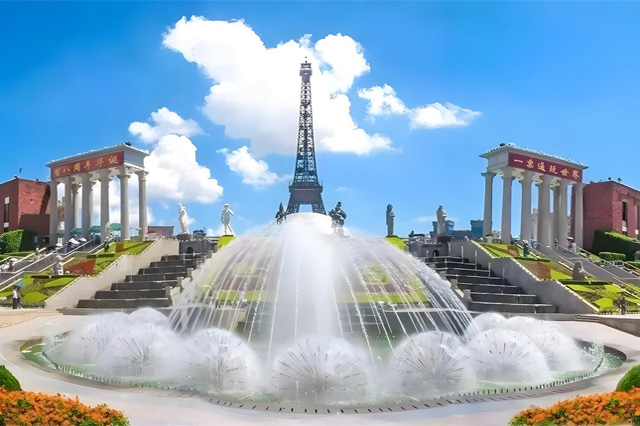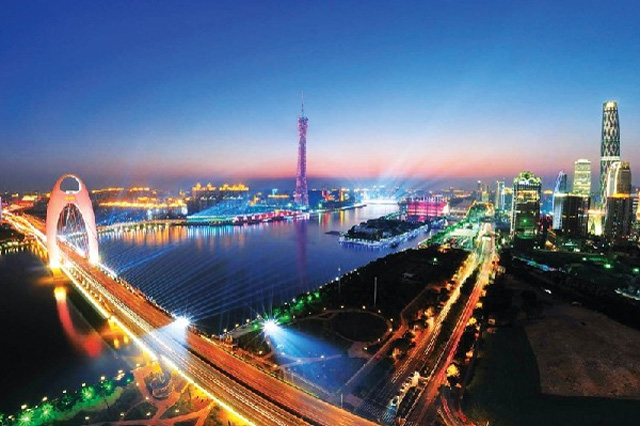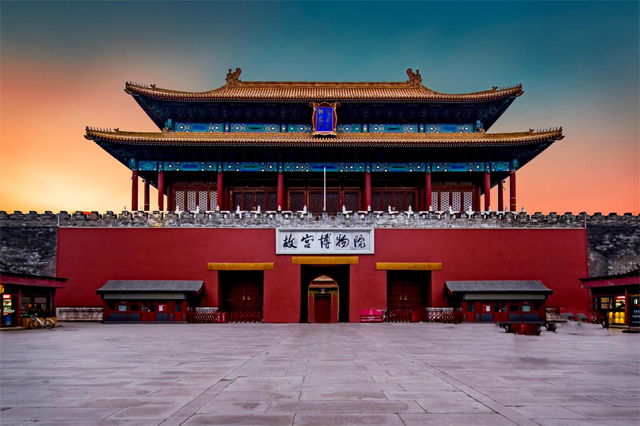Guiyang top ten list of tourist attractions, into the ecological city to enjoy the green life!
- China Tourism
- 2025-03-23 10:31
- 409
Guiyang, as the capital of Guizhou Province, is famous for its unique karst landform, rich ethnic culture and pleasant climate, and is known as the "Summer Capital of China". Guiyang is not only a tourist resort with rich natural landscape, but also has profound historical and cultural heritage. It is an ideal place to explore the natural and cultural beauty of Southwest China. Next, I will give you a summary of the list of Guiyang's top ten tourist attractions and enjoy a green life in the ecological city!
1. Qingyan Ancient Town
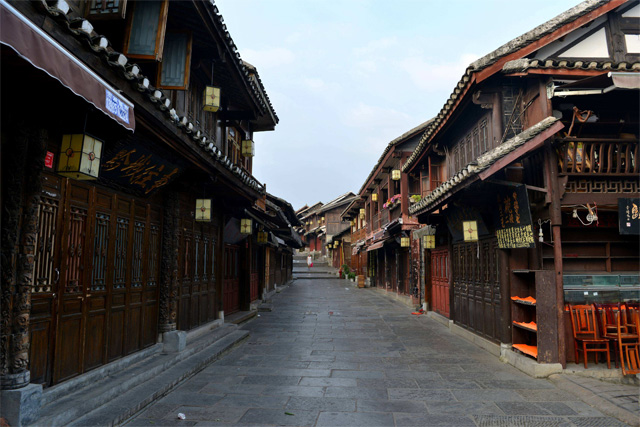
Qingyan Ancient Town, located in the south of Huaxi District, Guiyang City, Guizhou Province, is one of the four ancient towns in Guizhou. Qingyan ancient town was built in the 11th year of Hongwu in the Ming Dynasty (1378). It has a history of more than 600 years. It is known as "Southern Fortress" and "Building South Gateway. The ancient buildings in the ancient town are mainly concentrated in the ancient city area, mainly in the architectural style of the Ming and Qing Dynasties, mostly in the form of courtyards and courtyards, with distinctive local characteristics.
2. Qianlingshan Park
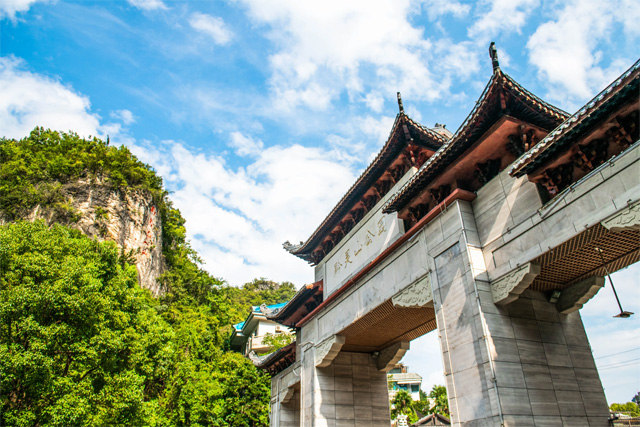
Qianlingshan Park is located at No. 187 Zaoshan Road, Yunyan District, Guiyang City, Guizhou Province. It was built in 1957. It is a comprehensive park integrating natural scenery, cultural relics, folk customs, entertainment and leisure. Qianling Mountain Park covers an area of 426 hectares. It is named after Qianling Mountain, which is known as "the first mountain in southern Guizhou". It integrates mountains, forests, springs, lakes, caves, temples, and animals. It is "expensive in the city." The beauty lies in nature.
3. Jiexiu Building
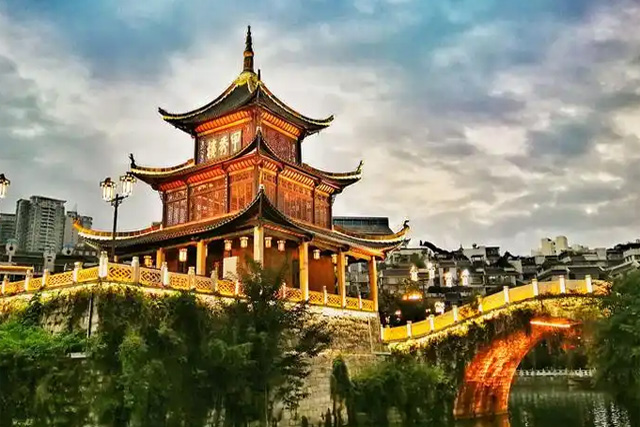
Jiaxiulou, located at No. 8, Cuiwei Lane, Nanming District, Guiyang City, Guizhou Province, is located on the Nanming River. It was built in the 26th year of Wanli of the Ming Dynasty (1598). It is based on a huge rock in the river and has been repaired repeatedly in the past dynasties. The existing building is the remains of reconstruction in the first year of Xuantong Qing Dynasty (1909). Jiixiu Building has a history of more than 400 years and has undergone six large-scale repairs. After four hundred years of wind and rain, it is still standing. It is a witness to the history of Guiyang and a cultural landmark of Guiyang.
4. Huaxi Yelang Valley
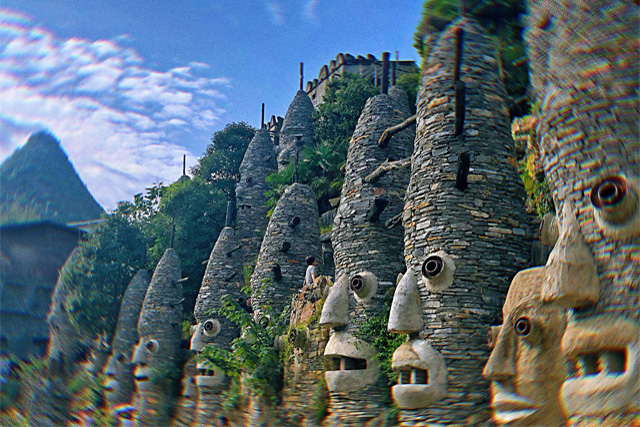
Huaxi Yelang Valley is located in Huaxi District, Guiyang City, Guizhou Province, covering an area of more than 200 acres. It is a tourist attraction with the theme of Yelang culture. Doupeng Mountain, which is opposite to Huaxi Yelang Valley, is said to have been the residence of King Yelang following Jin Zhusi. The ruins of the ancient Yelang Tunpu are still preserved on the top of the mountain, hence the name of Huaxi Yelang Valley. In the scenic area, there are palaces, temples and houses reconstructed according to the architectural style of ancient Yelang. These buildings are skillfully constructed with local stone and waste pottery, showing the unique charm of Yelang culture and incorporating elements of modern art.
5. Nanjiang Grand Canyon
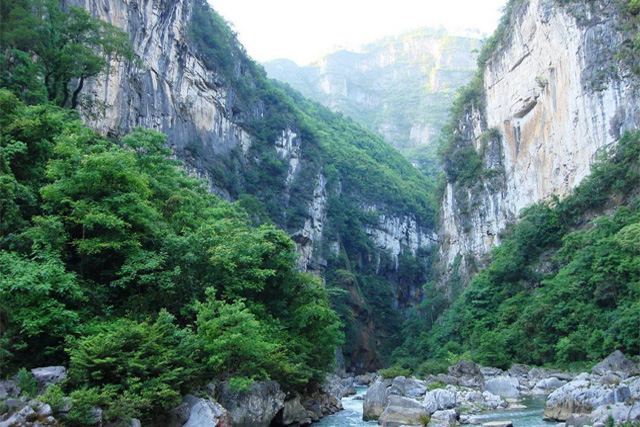
Nanjiang Grand Canyon is a national AAAA-level tourist attraction. It is located in the suburbs of Guiyang City, only 45 kilometers away from the center of Guiyang City and 20 kilometers away from Kaiyang County. It has good location advantages, beautiful scenic scenery, typical karst geological and landform development, and good vegetation protection. The forest coverage rate is more than 95%; the average annual temperature of the scenic spot is 15.4 ℃, the climate is cool, the air is fresh, no severe cold in winter, and no heat in summer.
6. Tianhetan
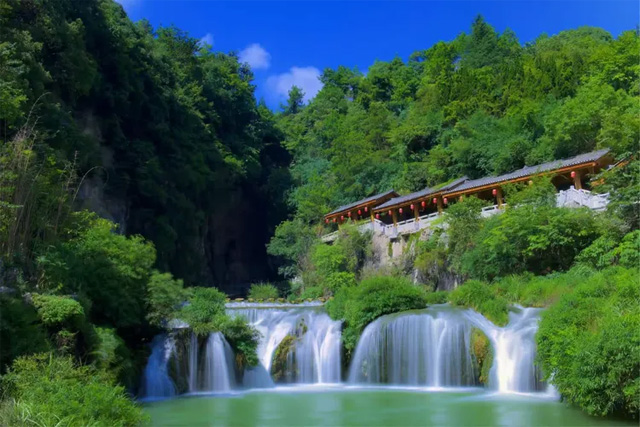
Tianhetan Scenic Area is located in Shiban Town, Huaxi District, Guiyang City. Within 24 kilometers from Guiyang City, it has the power of Huangguoshu Waterfall, the wonder of Dragon Palace and the beauty of Huaxi. It integrates waterfalls, clear springs, deep pools, strange stones, strange caves and natural stone bridges. Tianhetan, formerly known as Tiansheng Bridge, is named after Ludi River forming a shaft deep pool through the dark lake and flowing through Tiansheng Stone Bridge.
7. Hongfeng Lake
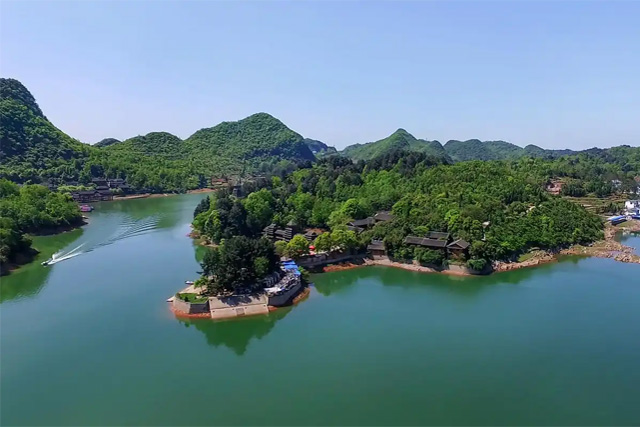
Hongfeng Lake is located in the western suburbs of Guiyang City, 28 kilometers away from the provincial capital Guiyang. It is the first stop of gold tourism on the western route of Guizhou. The scenic area covers an area of 200 square kilometers. It is a national-level scenic spot and a national AAAA-level tourist area that integrates highland lakes and mountains, karst landforms, and ethnic customs. There is a red maple ridge by the lake, with more maple trees on the ridge and around the lake. In late autumn, maple leaves are as red as fire, red leaves and beautiful scenery, hence the name "Red Maple Lake".
8. Huaxi Park
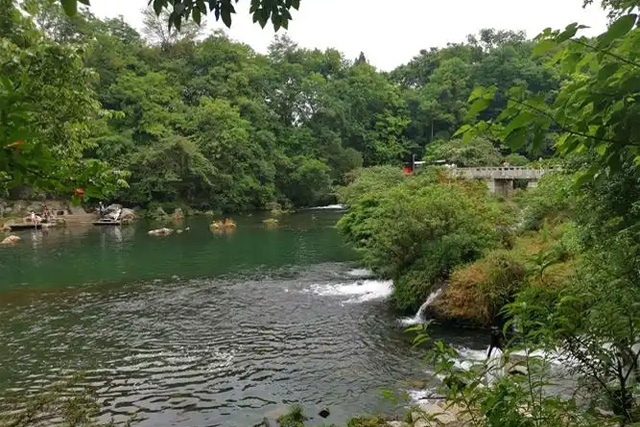
The prototype of Huaxi Park began in 1787 (the fifty-second year of Qianlong in the Qing Dynasty) and was built by Zhou Kui and his son. It began to be built as a park in 1937. In 1939, it was approved by the Guizhou Provincial Government to start the formal construction of the scenic spot and was basically completed in 1940. It was called "Zhongzheng Park". After the founding of New China in 1949, it was officially renamed "Huaxi Park". Huaxi Park is a famous scenic spot in Guizhou Province and is known as the Pearl of Guizhou Plateau.
9. Wenchang Pavilion
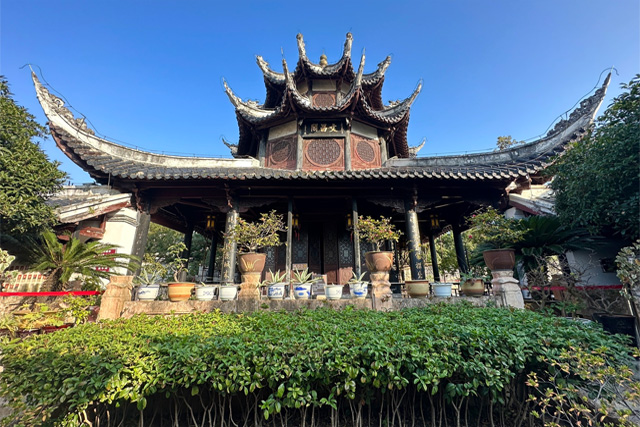
Wenchang Pavilion, a landmark building in Guiyang, was built in the 24th year of Wanli in the Ming Dynasty (1596). This is an ancient building complex of wooden structure with Wenchang attic as the main body, simple and simple, elegant and dignified. The main building Wenchang attic, chic shape, peculiar structure, domestic only. It is of great artistic and scientific value, and is highly regarded by architectural experts and praised by Chinese and foreign tourists. It was originally dedicated to the Emperor Wenchang, but is now a provincial key cultural relic protection unit.
10. Guizhou Provincial Museum
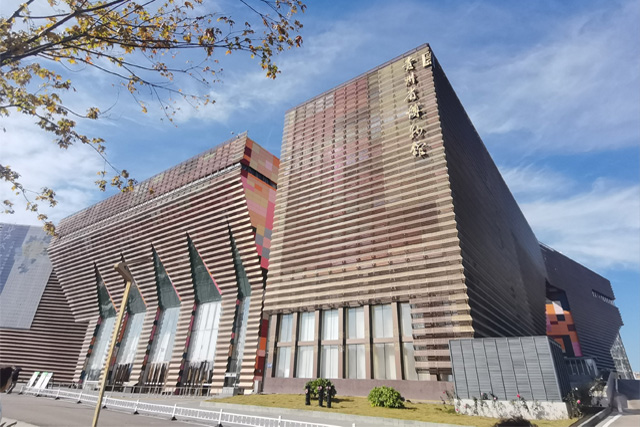
Guizhou Provincial Museum, a comprehensive museum, is located on the north side of the middle section of Lincheng East Road, Guanshan Lake District, Guiyang City. The project was established in 2007, started in 2010, relocated on June 28, 2013, and opened for trial operation in early 2015. There are more than 80000 collections in the Guizhou Provincial Museum. Ethnic cultural relics, Guizhou paleontological fossils, cultural relics unearthed in the Paleolithic Age, and various cultural relics reflecting local history, humanities and cultural diversity are the highlights of the collection. Among them, the Chinese Miao Costume Library and the Chinese Miao Silver Jewelry Library Ranked first in the country.
This article is edited and published by Journey Mark. If you have any questions, please feel free to contact us at any time.
Article Link:https://www.topvvv.com/en/China/65.html

